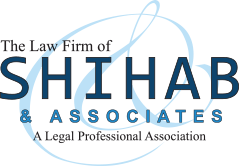Since the June 2013 Visa Bulletin was released, the priority date cut-off for Chinese nationals filing under the EB-3 immigrant visa category has been more recent than the priority date cut-off for the EB-2 visa category. In fact, the cut-off date for EB-3 visas for Chinese nationals has progressed nearly four years since June 2013, from September 1, 2008 to April 1, 2012, thanks in large part to a dramatic 18 month jump between August and September of 2013. Contrastingly, cut-off dates for the EB-2 category have lingered around the second half of 2008, progressing only five months, to December 8, 2008, between June 2013 and January 2014. In October 2013, Charles Oppenheim of the Visa Office predicted that the cut-off dates for EB-3 visas for Chinese nationals will likely continue to progress more rapidly than the EB-2 visa category.
With this in mind, employers who have already petitioned for Chinese nationals under EB-2 or those who are planning to file for an employment-based immigrant visa in the near future should consider alternative options that could accelerate their path the permanent residence. For instance, employers who have petitioned for Chinese nationals and have a pending or approved EB-2 immigrant petition may subsequently file under the EB-3 category for the same beneficiary (“downgrade”). Employers who seek to file a new Form I-140, Immigrant Petition for an Alien Worker from China may also concurrently file under both EB-2 and EB-3 visa categories.
This is possible because the federal regulation at 8 CFR §204.5(e) indicates that when a beneficiary has more than one approved petition, either because of concurrent EB-2/EB-3 filing or because of subsequent “upgrading” from EB-3 to EB-2, the beneficiary’s priority date is the earliest priority date assigned. Similarly, though less common, if a petitioner originally files under EB-2 and subsequently files under EB-3, the beneficiary will be assigned the earlier priority date.
“Downgrading” from EB-2 to EB-3Thanks to a unique exception to the 180-day validity period rule, employers who have already petitioned for a Chinese beneficiary under the EB-2 immigrant visa category may file a second I-140 using the original labor certification to support an EB-3 petition. While it is uncommon to “downgrade” from EB-2 to EB-3, employers of Chinese beneficiaries with either a pending or approved EB-2 petition may wish to consider filing under the EB-3 category because they could move ahead in the visa queue.
Considering the recent progression rate for EB-3 cut-off dates and the likelihood that this trend will continue, there is a very good chance that those Chinese nationals who choose to “downgrade” from EB-2 to EB-3 will receive an earlier priority date. However, even if by the time the EB-3 petition is filed the EB-2 cut-off date surpasses the EB-3 cut-off date, there is nothing to lose, as the beneficiary will retain the earliest priority date.
EB-2/EB-3 Concurrent FilingEmployers who intend to file for an employment-based immigrant visa on behalf of a Chinese national should consider concurrently filing the Form I-140 under both the EB-2 and EB-3 visa category using the same labor certification. Pursuant to 8 CFR §204.5(e), the beneficiary will be assigned the earlier priority date.
This unique opportunity for Chinese nationals will not last forever. Thus, it is important to act fast. Keep in mind that there are several requirements and strategies to consider when concurrently filing under EB-2/EB-3 or subsequently filing a second employment-based petition.


